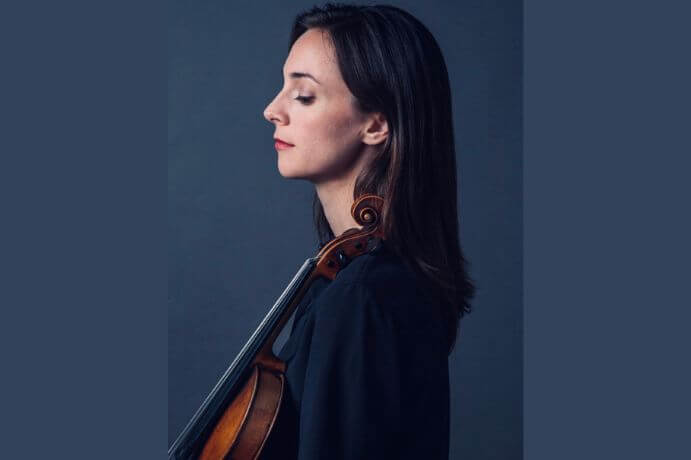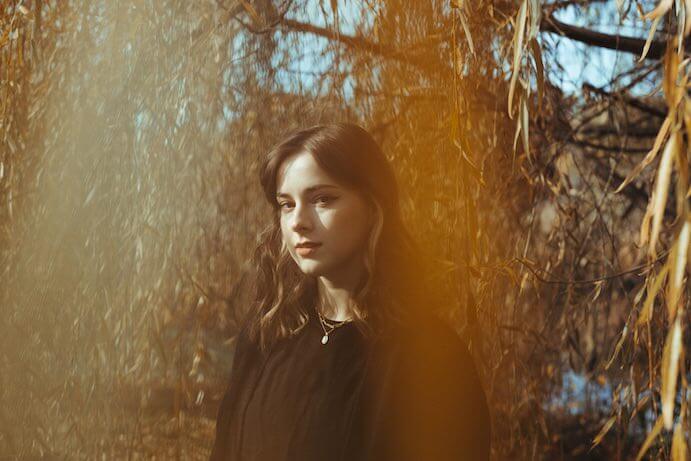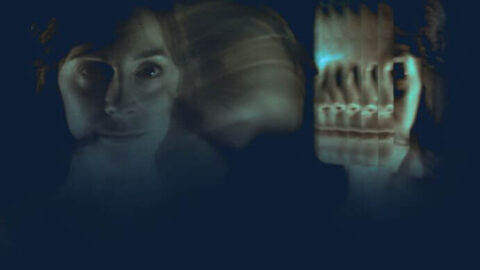In her debut album Lung, violinist-composer Adrianne Munden-Dixon and a cohort of five composers unveil buzzing dreamscapes and electronic vistas for solo violin. Released Jan. 27 on Gold Bolus Recordings, the album encompasses fickle moods that range from calm contemplation to twitchy jitteriness, and Munden-Dixon’s shapeshifting technical facility underscores the distinctiveness of the varying textures within each piece.
A founding member of the string quartet Desdemona, Munden-Dixon grew up in Georgia and now lives in New York and Montreal. Her first winter in Canada inspired her own contribution to the album, Zastrugi, meaning ridges of snow formed on a field by the wind, which reminded Munden-Dixon of the dunes in coastal Georgia.
Zastrugi opens with a fast, jerky motif that comes back in many guises. A pitchless papery rustling is accomplished by softly caressing the bow over the strings, suggesting gusts over the snowy landscapes. As the piece progresses, the tempo and textures shift dramatically, building an atmospheric soundscape that is as jagged and spiky as it is ethereal. The unknowability keeps us on our toes, as the techniques switch from slow, grating overpressure on the strings to a sinister jig, and back to the sound of wind.

Zeagrass/Reed, by fellow Desdemona member Carrie Frey, takes inspiration from Arkady Martine’s science fiction novel A Memory Called Empire and from choose-your-own-adventure books: the performer can travel between sections at will, according to Frey’s notes. The piece stitches together fractured tones, wispy intonations, and abrupt, gushing arpeggiations. When Munden-Dixon bows the harshest, the action over the bridge sounds insectoid and distorted, with bristling harmonics and edgy discolorations. To be sure, there are familiar devices of contemporary music, like bouncing the bow on the strings, and the same raspy, grinding bow overpressure — you can tell that Frey and Munden-Dixon are of one mind — but the acidic tone of the violin and the natural distortion reveal a sound palette not often explored in solo violin repertoire.
For wildly contrasting pieces, try Maria Kaoutzani’s Arachne and Cassie Wieland’s Lung. The former (‘spider’) is a hyperactive tarantella that cavorts all over the place with roguish impudence. In the second half, the music grinds to a halt, moving in spurts only to suddenly erupt at full speed again. The recording uses high reverb that gives Munden-Dixon the impression of cavernous spaciousness.
Wieland’s Lung sounds like a lullaby for the Earth in which airy textures — Munden-Dixon plays pitchlessly on the bridge — alternate with repeated single notes and overtones that peal on top. There’s echo again, suggesting expansive open fields, perhaps a desolate panorama. The motivic gestures repeat and speed up and are played more stridently as they build to a climax. It is a bittersweet lament for something you can feel but can’t quite put your finger on. The full story remains untold, as Wieland’s accompanying poem suggests:
we all hold stories in our details
in our hands
in our eyelids
in our lungs

One of the two pieces for solo violin and electronics, Generation, by Phong Tran opens with a low drone and a shadowy violin that weaves in thickening threads, as an ascending motif repeats and gains intensity. At the climax, the violin clashes against raspy, buzzing electronics that whoosh out in a supercharged atmosphere, like the staticky screen of an old tube TV.
Dimvoid “seeks expression in light, voids, and contradiction,” writes composer David Bird in his notes. The piece takes its title from Samuel Beckett’s Worstward Ho; its style was influenced by the absurdist writer’s wordplay. The electronics burble, buzz, and sparkle, sometimes flashing out with sci-fi eeriness; the violin forms corrosive figures that undulate around unstable textures, sometimes becoming nestled in the electronics. The dizzying strobe-light intensity of the explosive second half proves almost unendurable.
The six pieces on Lung, commissioned by Munden-Dixon in 2020, are driven by a nervy thrust and unified by recurring extended techniques — the wind, the uncomfortable overpressure, and the spacious reverberation. If this makes the album an exploration of sound phenomena, the music, at its most direct, is pure melancholy — an anxious cry at night.
I CARE IF YOU LISTEN is an editorially-independent program of the American Composers Forum, and is made possible thanks to generous donor and institutional support. Opinions expressed are solely those of the author and may not represent the views of ICIYL or ACF.
You can support the work of ICIYL with a tax-deductible gift to ACF. For more on ACF, visit the “At ACF” section or composersforum.org.
























